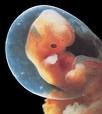What is the Medical Abortion?
During the first appointment at the clinic you receive the mifepristone pill to take orally. Then 24 to 72 hours later, in the privacy of your own home, you take the the second medication, misoprostol. Misoprostol causes contractions resulting in a miscarriage. When used in combination, mifepristone and misoprostol are 95-97% effective within two weeks. Mifepristone and misoprostol are FDA approved.
- Up to 8 weeks (49 days) for best success (97%). Success rates decrease as the pregnancy advances.
- Usually 2 visits to the provider.
-Take mifepristone on day 1.
-Take misoprostol pill buccally (allowing the pill to dissolve inside the mouth between the cheek and gum, or under the tongue) on day 2, 3, or 4.
-It usually takes several hours for the abortion to occur.
-Follow-up scheduled two weeks from first appointment.
- From mild to very strong cramping off and on throughout the abortion (commonly a 1 to 3 hour period).
- Heavy bleeding and passing clots is common during the abortion. Afterwards, lighter bleeding is common from 9 to 14 days or longer.
- 97% successful. When it fails, a surgical abortion is necessary




